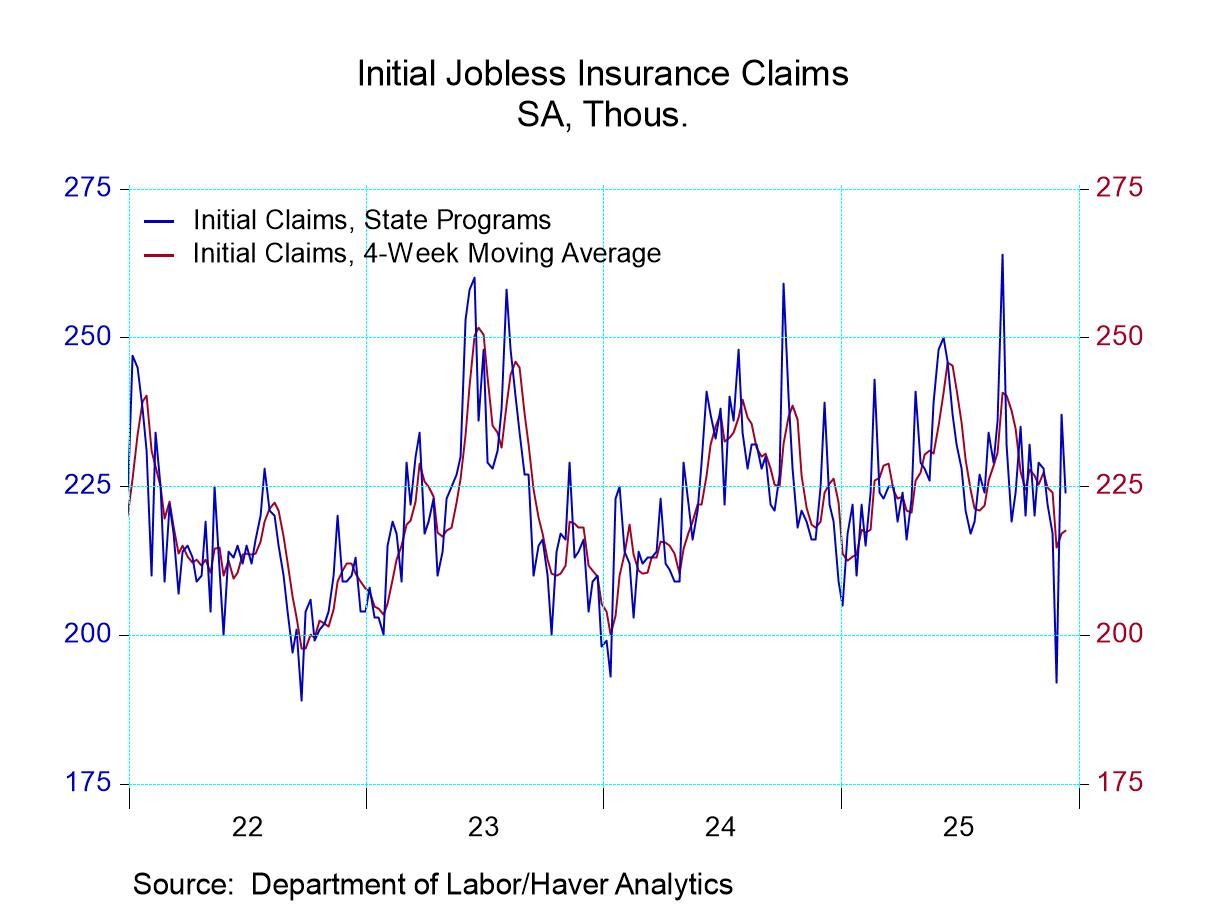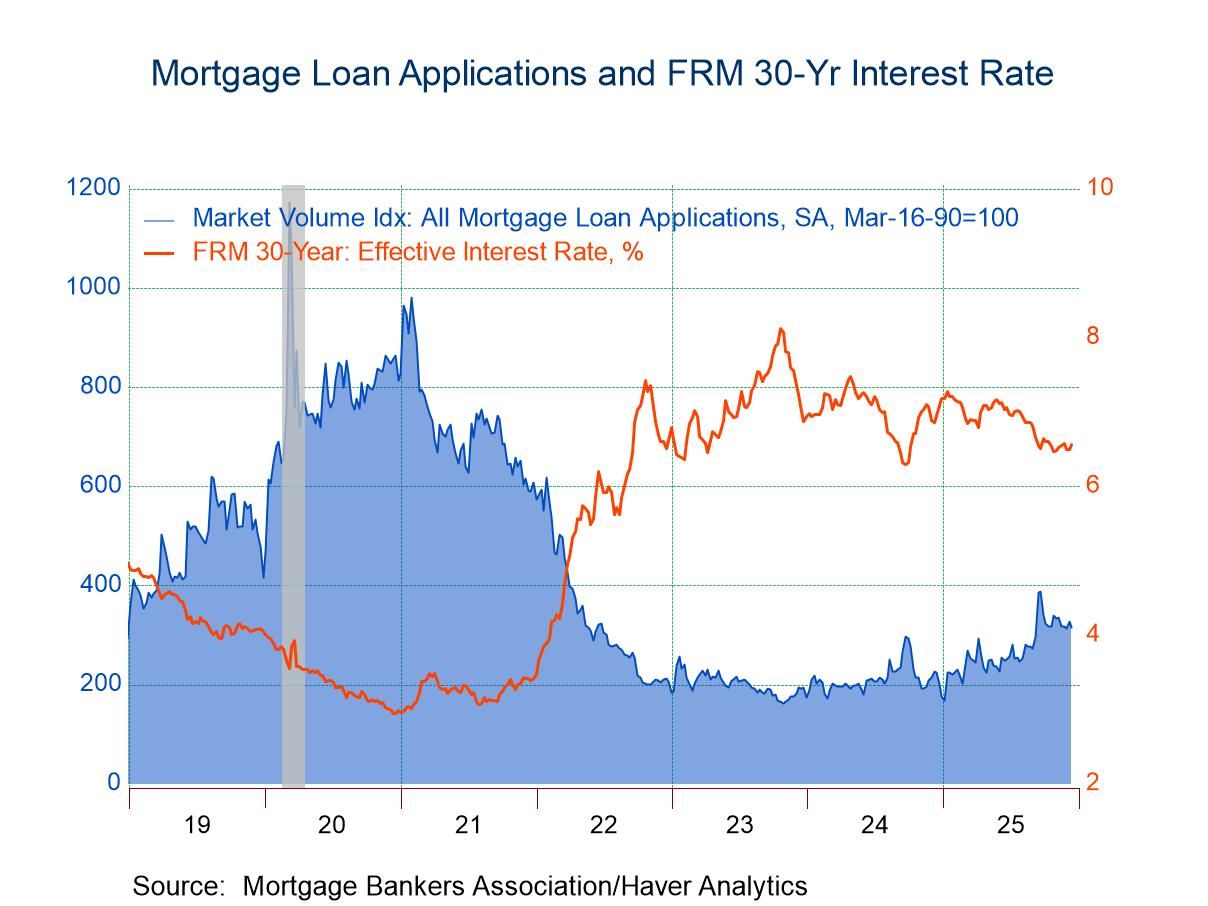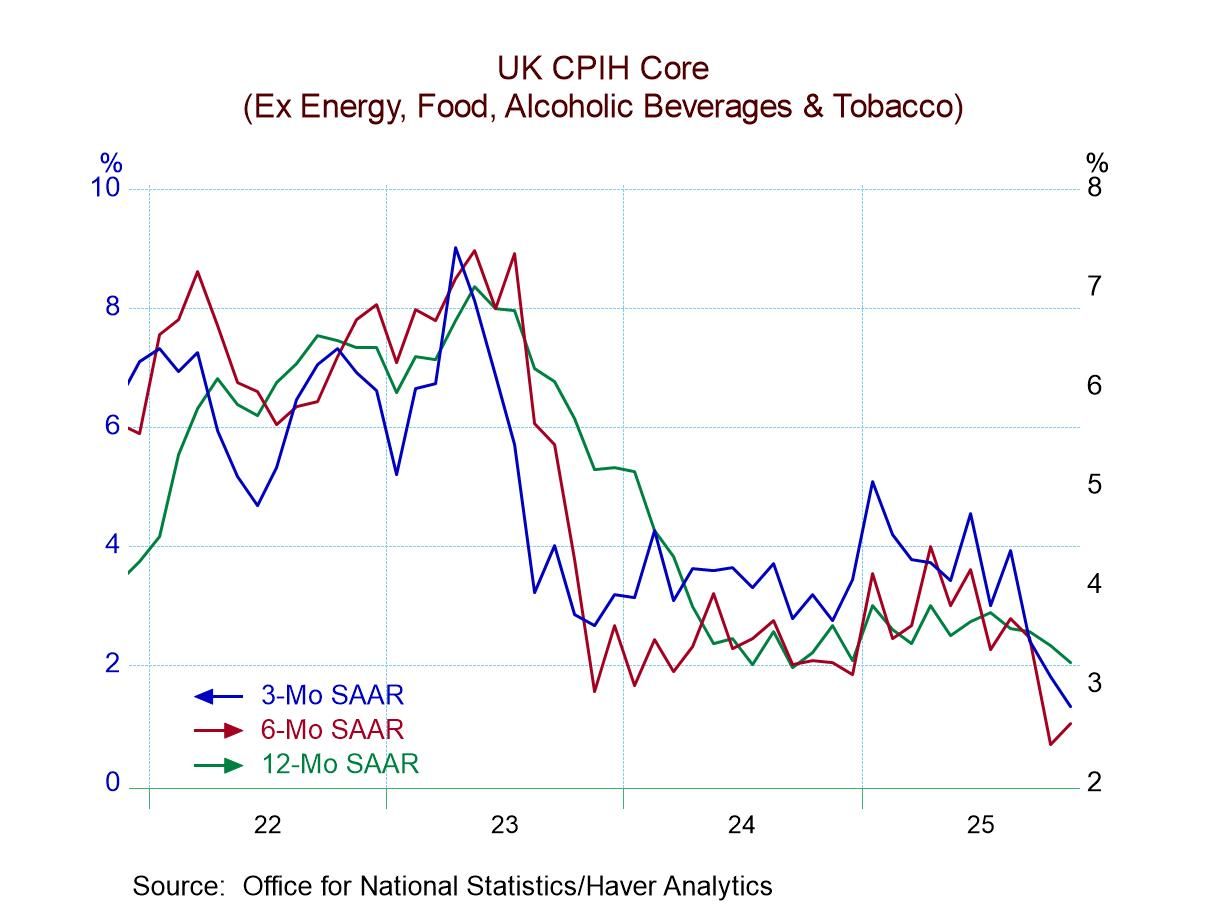U.S. GDP Q2’25 Shows More Growth, Less Inflation
by:Tom Moeller
|in:Economy in Brief
Summary
- Q2 GDP growth more than makes up deterioration in Q1.
- Consumer spending picks up while trade gap deterioration reverses.
- Price index gain roughly halves.
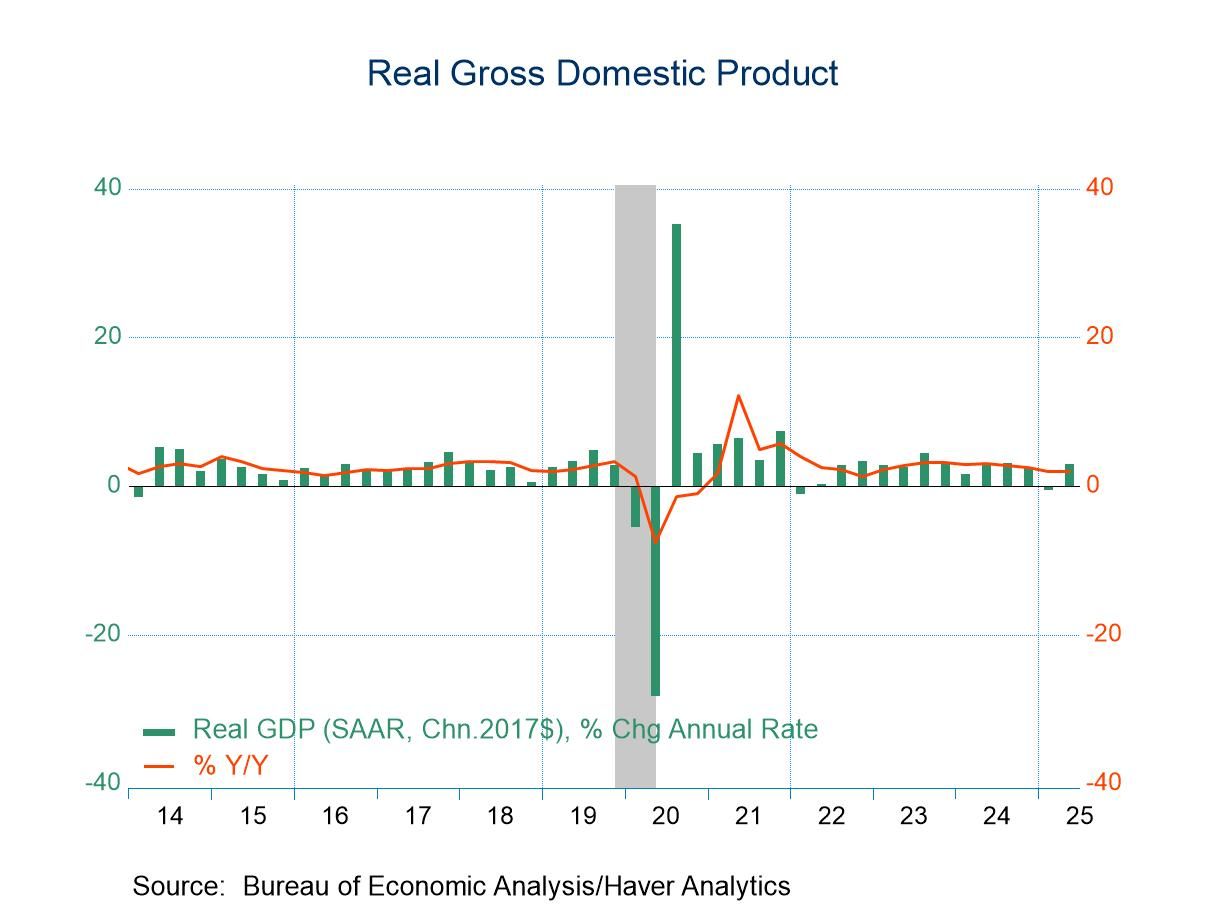

Real GDP grew 3.0% (SAAR) during the second quarter of 2025 after falling an unrevised 0.5% in Q1. A 2.3% rise had been expected in the Action Economics Forecast Survey. Despite the increase, annualized growth averaged only 1.2% in the first half of this year, less than half the gain during 2024.
Foreign trade balance improvement added 4.99 percentage points to growth last quarter after subtracting 4.61 percentage points in Q1. Imports fell 30.3% (+1.1% y/y) after surging 38.0% in Q1. Exports declined 1.8% (+1.9% y/y) after improving 0.4% in Q1. Inventories subtracted 3.17 percentage points from growth after adding 2.59 percentage point to Q1 growth.
Real final sales to domestic purchasers grew 1.1% (2.3% y/y) in Q2 after rising 1.5% in Q1. Personal consumption expenditures rose 1.4% (2.4% y/y) following a 0.5% gain. Durable goods spending rose 3.7% (4.8% y/y) after falling 3.7% in Q1. Motor vehicle purchases strengthened 16.2% (7.7% y/y) after declining 11.2% in Q1. Spending on home furnishings & appliances weakened 2.5% (+3.4% y/y) following a 1.5% rise. Recreational goods & vehicle outlays fell 3.8% (+4.2% y/y) last quarter after a 0.4% Q1 gain.
Nondurable goods outlays in constant dollars rose 1.3% (2.8% y/y) following 2.1% growth in Q1. Apparel spending increased 4.7% (4.6% y/y) following a 7.0% rise. Food & beverage buying gained 0.1% (1.4% y/y) after a 1.0% increase. Gasoline & fuel oil purchases weakened 4.3% (+0.2% y/y) after gaining 3.6% in Q1.
Real spending on services increased 1.1% (1.9% y/y) after a 0.6% gain. Outlays on housing & utilities eased 0.2% (+1.1% y/y) after rising 2.9% in Q1. Health care expenditures rose 3.0% (4.5% y/y), about the same as in Q1. Transportation outlays declined 3.1% (-0.7% y/y) after a 1.4% rise while recreation spending rose 2.3% (0.4% y/y) following a 5.1% decline. Restaurant & hotel expenditures increased 3.2% (1.4% y/y) after falling 1.8%. Financial services expenditures rose 2.0% (2.3% y/y) after a 0.1% Q1 increase.
Business fixed investment in constant dollars increased 1.9% last quarter (3.2% y/y) following a 10.3% surge in Q1. Expenditures on structures declined 10.3% (-3.8% y/y), the fourth straight quarter of decline. Expenditures on producers’ durable equipment increased 4.8% (7.0% y/y) after surging 23.7% in Q1. Outlays on information processing equipment rose 5.5% (18.8% y/y) after soaring 72.8% during Q1. Industrial equipment investment rose 4.5% (3.4% y/y), roughly the same as in Q1. Intellectual property product spending rose 6.4% (3.7% y/y) following a 6.0% rise.
Residential structures investment in real terms declined 4.6% (-1.3% y/y), the fourth decline in the last five quarters.


Government spending rose 0.5% in Q2 (2.0% y/y) after a 0.6% decline. Federal government expenditures declined 3.7% (+1.0% y/y) after falling 4.6% in Q1. National defense expenditures increased 2.2% (3.2% y/y) after falling 7.1% in Q1. State & local government spending rose 3.0% (2.6% y/y) following a 2.0% rise.
The GDP chain price index rose 2.0% last quarter (2.5% y/y) after increasing 3.8% in Q1. A 2.4% increase had been expected in the Informa Global Markets Survey. The PCE chain price index increased 2.1% (2.4% y/y) following a 3.7% rise. The PCE price index excluding food and energy rose 2.5% (2.7% y/y) after increasing 3.5% in Q1. The business fixed investment price index edged 0.3% higher after a 0.4% rise. The residential price index strengthened 1.5% (2.7% y/y) after a 4.1% rise while the government price index increased 2.7% (2.9% y/y) following a 4.6% rise.
The GDP data can be found in Haver’s USECON and USNA databases. USNA contains virtually all of the Bureau of Economic Analysis detail in the national accounts. The Action Economics consensus estimates can be found in AS1REPNA.


Tom Moeller
AuthorMore in Author Profile »Prior to joining Haver Analytics in 2000, Mr. Moeller worked as the Economist at Chancellor Capital Management from 1985 to 1999. There, he developed comprehensive economic forecasts and interpreted economic data for equity and fixed income portfolio managers. Also at Chancellor, Mr. Moeller worked as an equity analyst and was responsible for researching and rating companies in the economically sensitive automobile and housing industries for investment in Chancellor’s equity portfolio. Prior to joining Chancellor, Mr. Moeller was an Economist at Citibank from 1979 to 1984. He also analyzed pricing behavior in the metals industry for the Council on Wage and Price Stability in Washington, D.C. In 1999, Mr. Moeller received the award for most accurate forecast from the Forecasters' Club of New York. From 1990 to 1992 he was President of the New York Association for Business Economists. Mr. Moeller earned an M.B.A. in Finance from Fordham University, where he graduated in 1987. He holds a Bachelor of Arts in Economics from George Washington University.



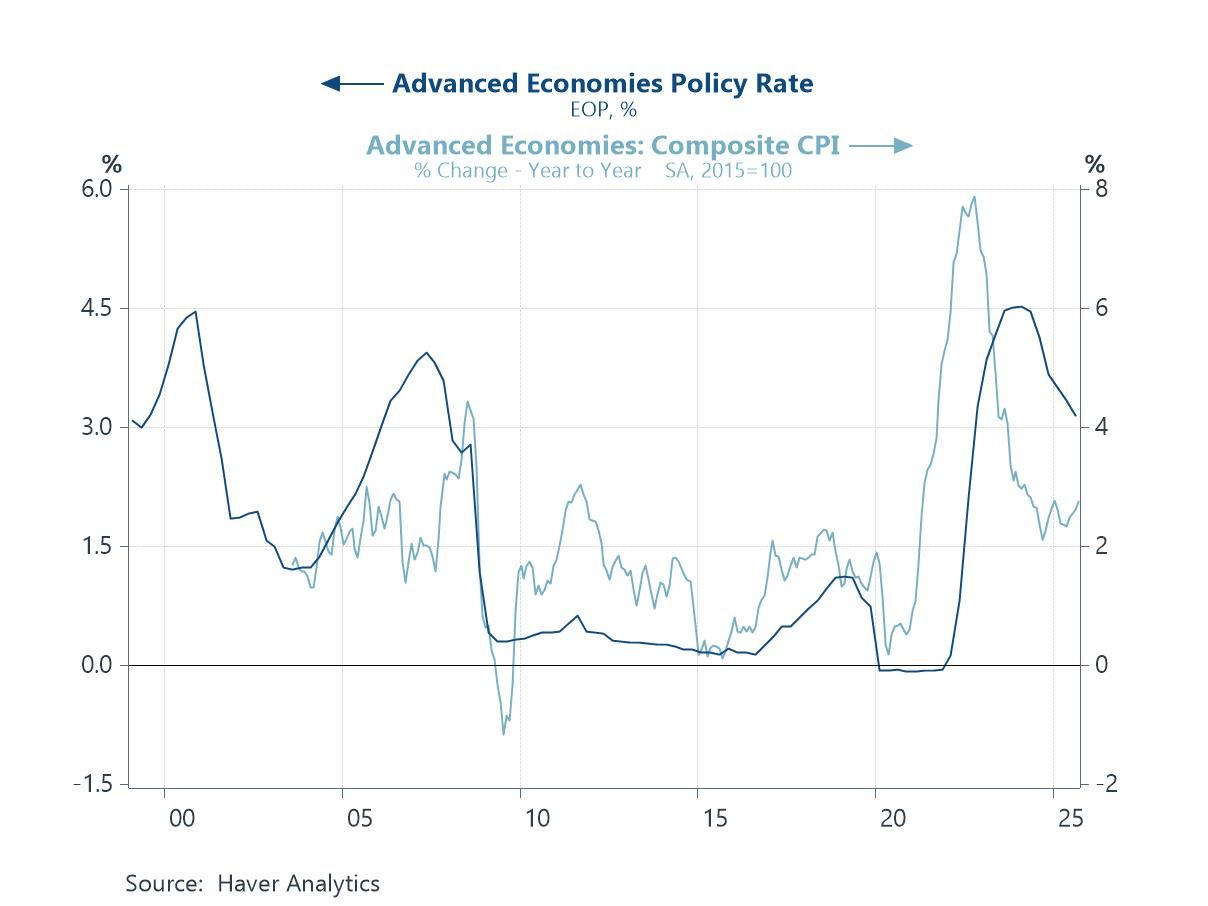
 Global
Global